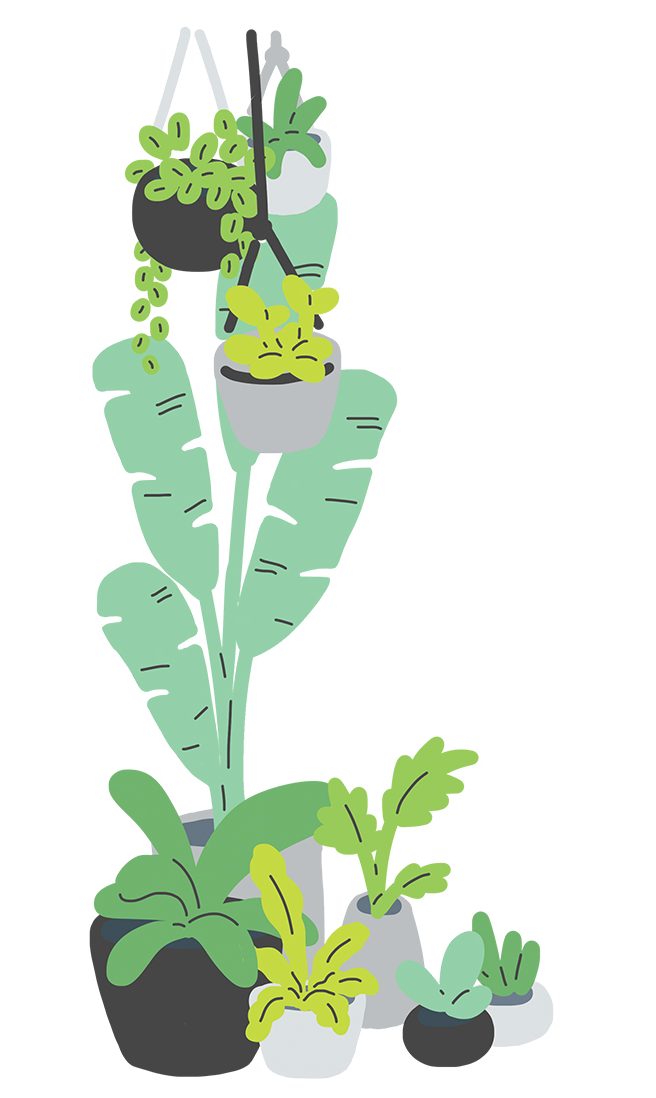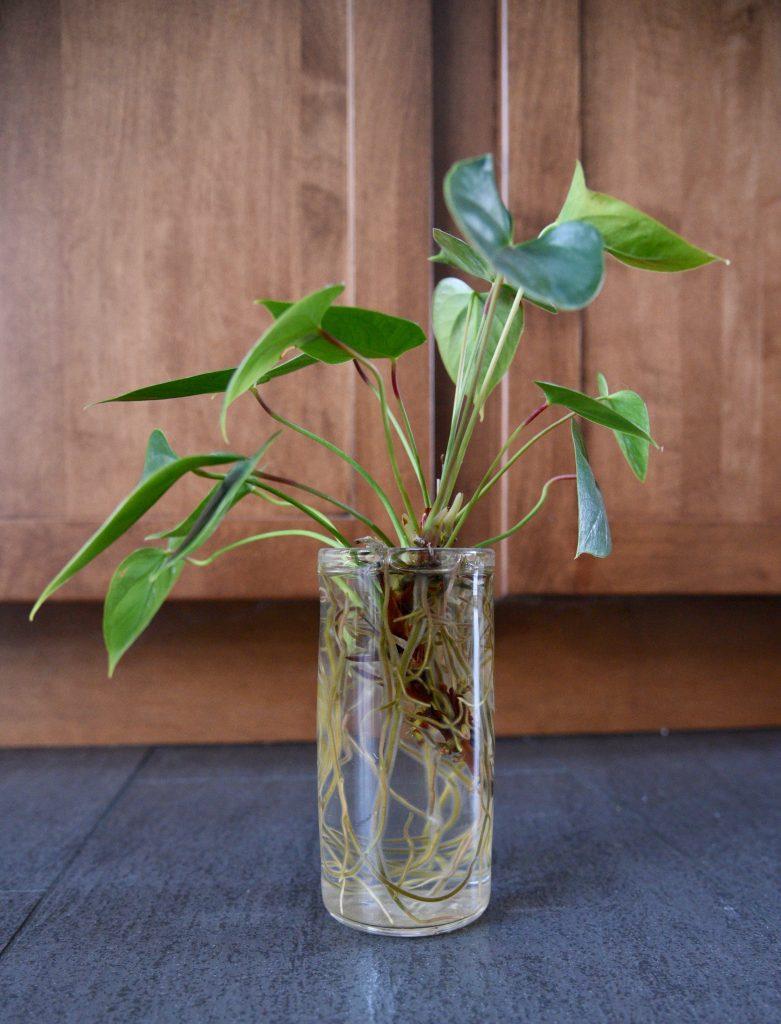Long, lanky vines intertwine and hang from the wall, while various ferns and succulents line the windowsill. Reused takeout containers and lids create makeshift pots and plant saucers, and wooden chopsticks act as support sticks. Although nowhere near perfect, this is the indoor garden that has grounded me during the long months at home.
Before the pandemic, I had pretty much the opposite of a green thumb. The idea of having another living thing depending on me for survival was far too intimidating, and I refused to accept the responsibility of the death of a newly purchased plant. While I loved admiring their live counterparts from afar, fake plants seemed like the more appealing option for house decor at the time.
Fast forward a few weeks into the pandemic — like many others experiencing shelter-in-place for the first time, I spent far too long cooped up in my room without taking a breath of fresh air or feeling the sun’s warmth on my skin. The rapid climb of the COVID-19 death toll left me with the alarming realization that staying within my house’s boundaries would be my new reality. I desperately needed a change of scenery. My journey from being a brown thumb to a still brown, but slightly greener one, began.
Trust trial and error
With most of my classes asynchronous and extracurriculars canceled, I had plenty of time on my hands. After a long week featuring pressing project deadlines, tests, and little sleep, I’d often be greeted by withering — if not already dead — leaves. During my first few weeks in my plant-caretaking career, I’d immediately feel a wave of guilt and panic at the sight.
I’ve realized now that mistakes are all part of the learning process. Instead of mourning the loss of my houseplant, I now analyze what went wrong and if I’m providing the appropriate living conditions for it.
Plant care leads to self-care
Neglecting my own mental health would mirror itself in my plants. As a result, plants served as living reminders for me to take care of myself during the pandemic. The pale, yellowing leaves caused by a lack of sunlight forced me to think about my plants’ light environment — were they getting enough time in the sun? Was I getting enough time in the sun? Leaving my house more than twice a week without my family’s coercion was rare, as I never had outdoor extracurriculars or school to attend in person.
Seeing with my own eyes how a lack of light had affected my plants, I was motivated to spend more time outdoors. When I put my plants outdoors, the intense rays of light would scorch the lush green leaves into crisping brown chips. I’d return to my plants in horror, pondering how the sunlight could have done so much damage in such little time. Could the sun be doing the same thing to my own skin? Rest assured, as someone who often skipped sunscreen in my skincare routine, it quickly became a staple before stepping out the door.
As roots grew, my physical and mental awareness did too; I found myself more reflective and sensitive to emotional changes than before.

Planting hope
Watching a plant outgrow its nursery pot and develop new leaves is a gratifying experience that has allowed me to reflect on my habits and the time that has passed during the pandemic. As days and weeks blend together, being a plant parent gives me the opportunity to develop a routine of care, even when I lack the motivation to care for myself.
Though I can attribute some of my development to being able to spend more time alone at home, plants provided the framework for me to increase my self-awareness. As roots grew, my physical and mental awareness did too; I found myself more reflective and sensitive to emotional changes than before.
Most of all, my appreciation for the outdoors has magnified, and I know that I’ll always be able to welcome nature into my home with my indoor jungle.



